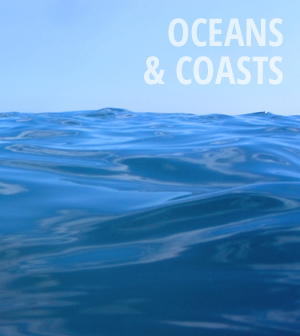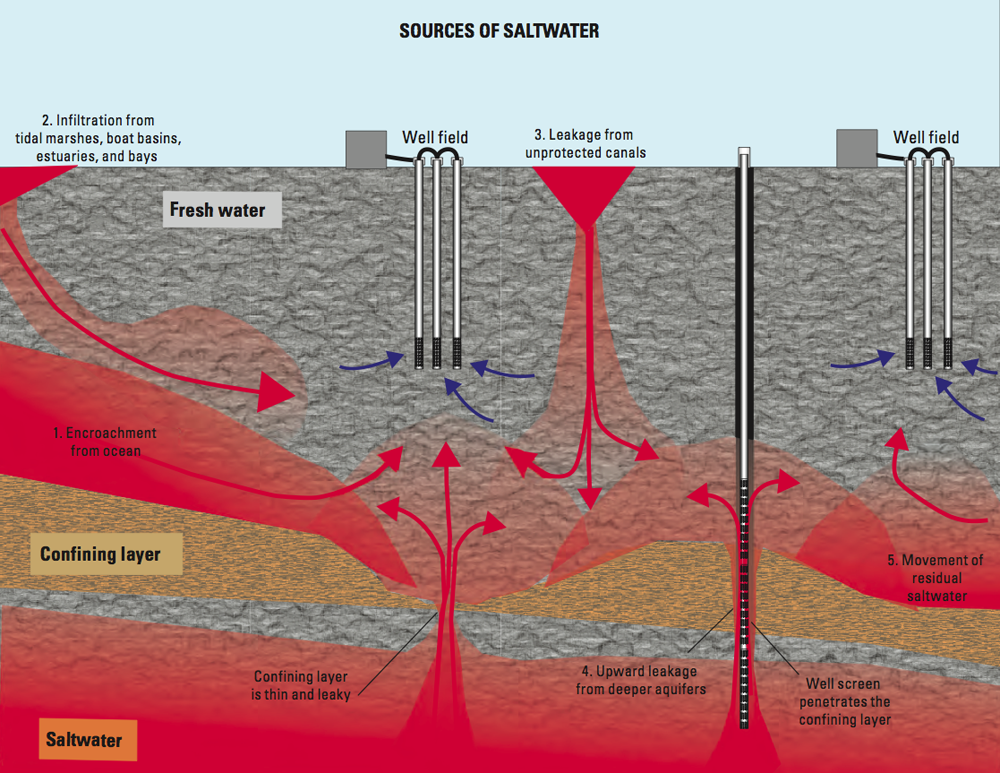Saltwater intrusion monitoring in Southwest Florida needs upgrades

Saltwater is seeping into the aquifers that supply some Southwest Floridians with drinking water, and gaps in the monitoring network that tracks the advancing saltwater front could leave water managers ill prepared, according to a report from the U.S. Geological Survey.
Contamination of drinking water aquifers is well established problem in Florida, according to Scott Prinos, a USGS hydrologist and author of the report.
“Saltwater intrusion in Florida has already led to abandonment of a number of public water supply wells or well fields,” Prinos wrote in an email. Well fields in Miami, Coconut Grove and Naples were contaminated by saltwater and abandoned.
Saltwater intrusion becomes a problem in coastal aquifers when the hydraulic connection between groundwater and seawater tips too far inland. Human activities like excessive groundwater withdrawals and drainage canals can reduce the pressure exerted by groundwater on seawater, which allows the saltwater to creep further into underground aquifers.
In some cases, the saltwater can reach municipal well fields and contaminate drinking water sources, forcing water managers to take costly measures like installing desalination equipment or abandoning the wells altogether.
It’s a matter of increasing concern in Southwest Florida because the population there is on the rise, according to the report. More people generally means more groundwater pumping, which can accelerate the intrusion. Rising seas associated with climate change could also make things worse.
“Sea level rise could increase saltwater intrusion by reducing freshwater flow in the aquifer towards the coast, by reducing the level of freshwater in the aquifer relative to sea level, and by increasing leakage around coastal salinity control structures,” Prinos wrote.

The routes of saltwater intrusion Click for large version. (Credit: USGS)
An extensive network of monitoring wells throughout South Florida serves to keep water managers informed about the location of the saltwater front relative to public wells. Water samples from the wells are tested determine the specific conductance of water, or the concentrations of total dissolved solids or chloride.
Though the network has provided managers in Southeast Florida with ample warning of encroaching saltwater in the past, a review of the wells in Southwest Florida suggests that part of the state may not be so well informed.
One issue in the region is a lack of wells where they’re needed. Wells are sparse near the current saltwater front, according to Prinos. Other wells are just too corroded or damaged to use. The front has actually passed some wells, and no other wells stand between the saltwater and certain well fields.
Some wells are open to multiple aquifers and might even provide a pathway for saltwater move between otherwise confined aquifers.
Though some of the network’s issues can be resolved by drilling new wells, the monitoring methods and maintenance should also be improved, Prinos said. That includes regularly assessing wells for damage. The region could also benefit from chemical studies like age dating and stable isotope analysis, which could help determine the origin of sampled saltwater.
South Florida isn’t the only place where water managers need to keep an eye on intruding saltwater. The issue is widespread and is particularly common where groundwater levels are low compared to sea levels.
Prinos wrote that recent conferences on saltwater intrusion monitoring have included experts from California, Florida, Massachusetts, Texas, Belgium, Israel, Italy, Korea, Morocco, the Netherlands, Spain and Tunisia.
“Just to name a few,” he wrote.





Peter de Vries
June 15, 2013 at 12:33 pm
Maybe you could try to use the Smart Citizen kit: http://www.smartcitizen.me